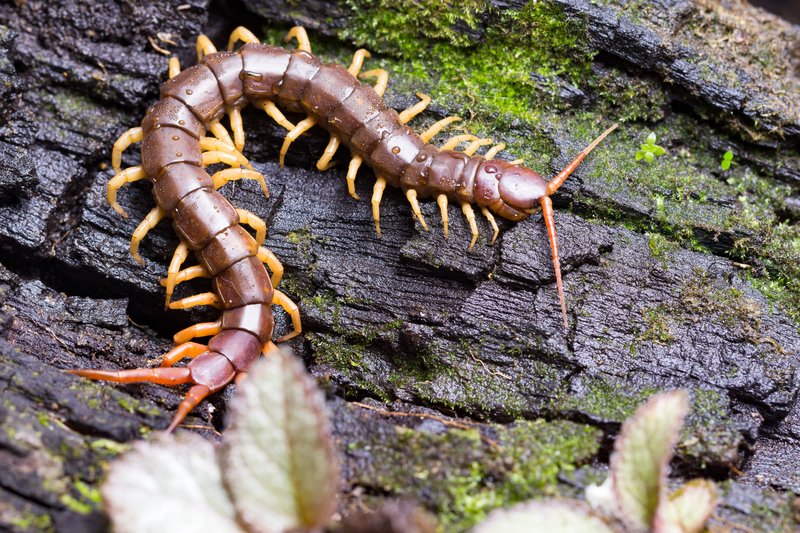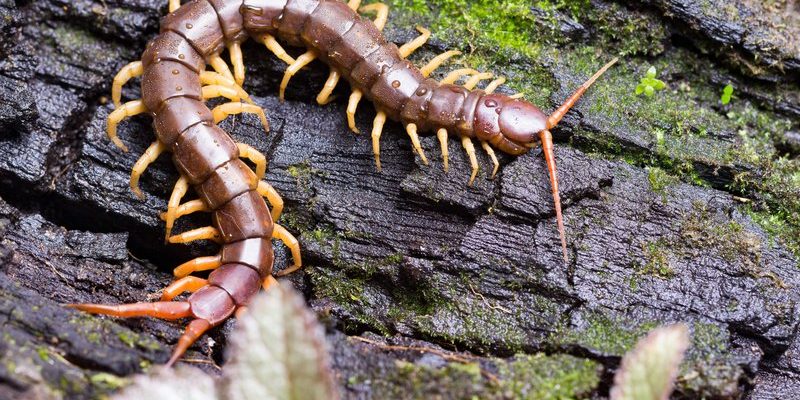
Let me break it down for you. Velvet worms are these fascinating, almost alien-looking creatures with a soft, velvety exterior. In contrast, centipedes and millipedes are part of a larger family of arthropods, making them relatives that share some features but differ significantly in behavior and appearance. Grab a cup of coffee, and let’s dig into the similarities and differences between these intriguing animals.
What Are Velvet Worms?
Velvet worms, or onychophorans, might look strange at first glance, but they are truly fascinating. With their soft, segmented bodies and numerous small legs, they resemble a cross between an earthworm and an insect. These creatures are typically found in humid environments, like leaf litter or under rocks, where they can stay moist and hidden from predators.
**So, what sets them apart?** Well, velvet worms are unique in that they have a distinctive way of hunting. They produce a sticky slime to trap their prey, which usually consists of insects. When they catch dinner, their method of eating is intriguing: they have jaws that can extend out, allowing them to consume their prey almost whole. Talk about a cool party trick!
**Their lifecycle is also something to admire.** Velvet worms undergo a form of development known as “direct development,” meaning they don’t go through a larval stage like many other creatures. Instead, young velvet worms resemble miniatures of adults, making their growth process straightforward.
Understanding Centipedes
Now, let’s shift gears and talk about centipedes. These creepy crawlies are more familiar to many folks, and you might have seen one scurrying across your floor or hiding under a rock. Centipedes are long, flat creatures characterized by their many legs—each segment of their body has a pair, and they can have anywhere from 15 to over 300 legs, depending on the species.
**Here’s the thing about centipedes:** they are predators! They use their venomous fangs to subdue prey, which can include insects and even small vertebrates. This makes them an important part of the ecosystem, helping to control insect populations. Just picture a tiny, agile athlete sprinting across the forest floor, hunting for dinner. Pretty impressive, right?
**And let’s not forget about their speed.** Centipedes are notoriously fast, so you’re not likely to catch one without a quick reflex! Their ability to move quickly is a significant advantage, allowing them to escape predators and snag a meal before it gets away.
Exploring Millipedes
When it comes to millipedes, think “slow and steady.” Unlike their centipede relatives, millipedes have more rounded bodies and are generally slower. They also prefer to eat decaying plant matter, which makes them decomposers and essential for nutrient recycling in their environments. Imagine them as nature’s recyclers, working quietly in the background to break down dead leaves and materials.
**What’s interesting is their defense mechanism.** When threatened, many millipede species release a chemical that can deter predators. While it’s not venomous like the centipede’s bite, it’s enough to make some animals think twice. It’s a little like having a built-in security system!
**Also, millipedes can be tricky to identify** because some species can curl up into a tight coil when threatened, becoming a hard, armored ball. So that round, wiggly thing you see might just be a millipede playing it safe!
Comparing Their Habitats
When it comes to habitats, all three creatures thrive in moist environments, but they have different preferences. Velvet worms are often found in damp leaf litter or under stones in tropical and temperate regions. Their habitat is crucial for keeping their skin moist, as they can dry out quickly.
**Centipedes, on the other hand, prefer more varied environments.** You might find them in forests, grasslands, and even urban areas. They seek out dark, damp places to hunt but are more adaptable than velvet worms.
**Millipedes are quite the homebodies.** They often stick to the soil, leaf litter, or under rotting logs where they can munch on organic matter. They prefer environments where they can hide from predators—after all, who wouldn’t want a cozy nook to munch on some leaves?
Behavioral Differences
**Now, let’s dive into behavior.** Velvet worms are pretty laid back, moving at a leisurely pace as they hunt. They tend to be more solitary and don’t interact with others unless it’s mating time. This calm lifestyle suits their strategy—using slime to trap prey rather than chasing it.
**Centipedes are the opposite.** They’re known for their aggressive behavior and quick movements. If you disturb a centipede, it might race away, but it could also turn and bite if it feels threatened. Their predatory nature means they’re always on the lookout for something to eat, making them active hunters.
**Conversely, millipedes are docile creatures.** They don’t bite and prefer to avoid confrontation. When threatened, they often resort to curling up or releasing their defensive chemicals instead of fighting back. It’s like they’re saying, “Hey, I’d rather not get into a tussle—let’s keep the peace!”
How They Fit Into the Ecosystem
Each of these creatures plays a role in their ecosystem. Velvet worms help control insect populations by preying on them. Their presence indicates a healthy, moist environment.
**Centipedes are also key predators.** By keeping insect populations in check, they contribute to the balance of their ecosystems, ensuring no single species takes over. Their speed and hunting skills make them efficient at their job.
**Millipedes serve as decomposers.** They break down organic matter, returning essential nutrients to the soil. Their activities help enrich the earth, making it better for plants. Without them, decomposing materials would accumulate, and nutrient cycling would suffer.
When you look at velvet worms, centipedes, and millipedes side by side, it’s clear they each have their distinct charm. Velvet worms might be the weird but wonderful neighbors of the animal kingdom, centipedes are the speedy hunters, and millipedes are the diligent recyclers.
**Here’s the thing:** understanding these creatures helps us appreciate the diversity of life around us. Whether you’re curious about their behaviors or intrigued by their roles in nature, each has its place in the grand tapestry of our ecosystems. So, next time you encounter one of these fascinating critters, you’ll know a bit more about their unique stories and why they matter.

